Life As a Wellhead Pumper
Job Description & Duties Operate power pumps and auxiliary equipment to produce flow of oil or gas from wells in oil field.
Life As a Wellhead Pumper
- Prepare trucks and equipment necessary for the type of pumping service required.
- Attach pumps and hoses to wellheads.
- Open valves to return compressed gas to bottoms of specified wells to repressurize them and force oil to surface.
- Control pumping and blending equipment to acidize, cement, or fracture gas or oil wells and permeable rock formations.
- Repair gas and oil meters and gauges.
- Start compressor engines and divert oil from storage tanks into compressor units and auxiliary equipment to recover natural gas from oil.
Featured schools near , edit
Wellhead Pumper Needed Skills
Wellhead Pumpers state the following job skills are important in their day-to-day work.
Operation Monitoring: Watching gauges, dials, or other indicators to make sure a machine is working properly.
Operation and Control: Controlling operations of equipment or systems.
Troubleshooting: Determining causes of operating errors and deciding what to do about it.
Critical Thinking: Using logic and reasoning to identify the strengths and weaknesses of alternative solutions, conclusions or approaches to problems.
Monitoring: Monitoring/Assessing performance of yourself, other individuals, or organizations to make improvements or take corrective action.
Repairing: Repairing machines or systems using the needed tools.
Related Job Titles
- Oil Field Worker
- Head Pumper
- Oil Well Pumper
- Oil Field Technician
- Oil Field Pumper
Is There Going to be Demand for Wellhead Pumpers?
There were about 11,500 jobs for Wellhead Pumper in 2016 (in the United States). New jobs are being produced at a rate of 21.7% which is above the national average. The Bureau of Labor Statistics predicts 2,500 new jobs for Wellhead Pumper by 2026. The BLS estimates 1,800 yearly job openings in this field.
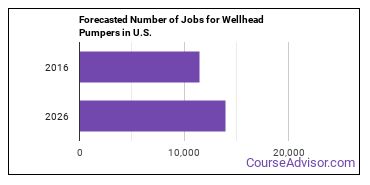
The states with the most job growth for Wellhead Pumper are North Dakota, Wyoming, and Colorado. Watch out if you plan on working in Kentucky, Montana, or Michigan. These states have the worst job growth for this type of profession.
Do Wellhead Pumpers Make A Lot Of Money?
The salary for Wellhead Pumpers ranges between about $31,280 and $79,930 a year.
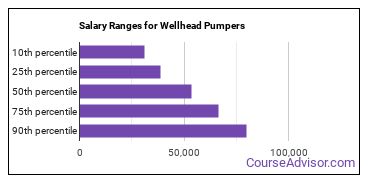
Wellhead Pumpers who work in Colorado, Wyoming, or Montana, make the highest salaries.
How much do Wellhead Pumpers make in each U.S. state?
| State | Annual Mean Salary |
|---|---|
| Arkansas | $57,940 |
| California | $47,940 |
| Colorado | $69,130 |
| Illinois | $33,730 |
| Kansas | $47,390 |
| Kentucky | $62,670 |
| Louisiana | $47,300 |
| Michigan | $50,590 |
| Mississippi | $58,480 |
| Montana | $61,020 |
| New Mexico | $55,210 |
| North Dakota | $59,030 |
| Ohio | $39,860 |
| Oklahoma | $51,900 |
| Pennsylvania | $42,300 |
| Texas | $54,690 |
| Utah | $60,010 |
| West Virginia | $42,230 |
| Wyoming | $63,120 |
What Tools do Wellhead Pumpers Use?
Below is a list of the types of tools and technologies that Wellhead Pumpers may use on a daily basis:
- Microsoft Excel
- Microsoft Word
- Microsoft Office
- Microsoft Outlook
- Data entry software
- Supervisory control and data acquisition SCADA software
- SAP software
Becoming a Wellhead Pumper
Are there Wellhead Pumpers education requirements?
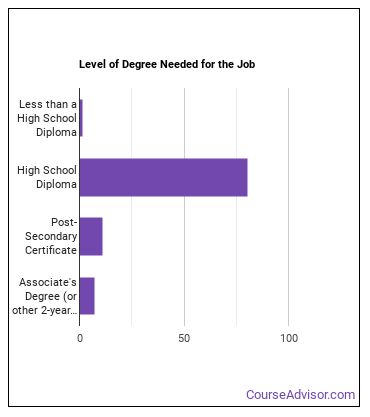
What work experience do I need to become a Wellhead Pumper?
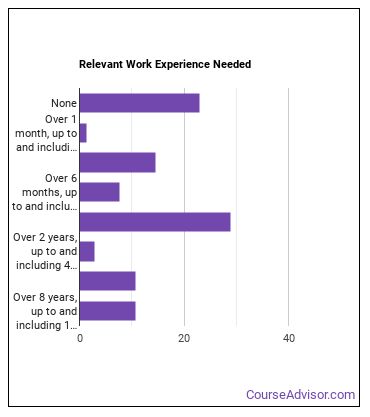
Wellhead Pumpers Sector
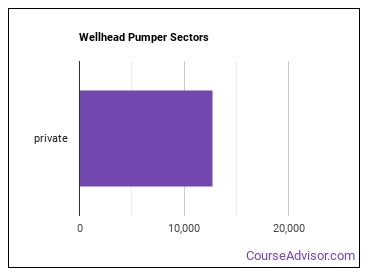
The table below shows some of the most common industries where those employed in this career field work.
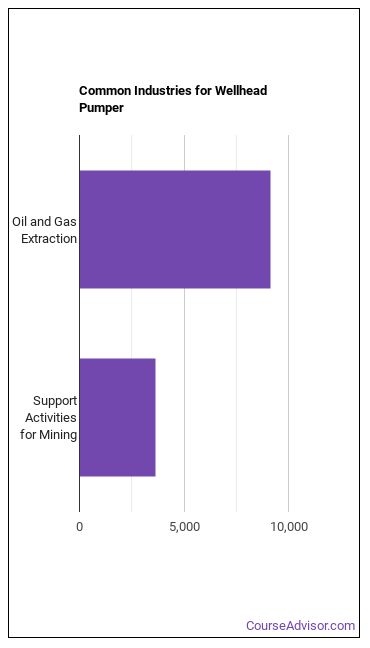
Related Careers
Those interested in being a Wellhead Pumper may also be interested in:
References:
More about our data sources and methodologies.
Featured Schools
 Request Info
Request Info
|
Southern New Hampshire University You have goals. Southern New Hampshire University can help you get there. Whether you need a bachelor's degree to get into a career or want a master's degree to move up in your current career, SNHU has an online program for you. Find your degree from over 200 online programs. Learn More > |
